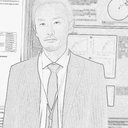Imaging studies in sixty patients with acute suppurative thyroiditis.
Nyckelord
Abstrakt
BACKGROUND
Pyriform sinus fistulae are the major routes of infection in acute suppurative thyroiditis (AST). There have been only a few reports describing imaging studies in AST. We reviewed our imaging studies in patients with AST to elucidate its features so as to facilitate its diagnosis and treatment.
METHODS
We reviewed ultrasonography (US) examinations, computed tomography (CT) scans, and barium swallow studies performed on 60 patients with the AST who were seen for medical care between 1998 and 2008 and were retrospectively reviewed. All of these patients had pyriform sinus fistulae.
RESULTS
In the acute inflammatory stage, US showed a hypoechoic lesion spreading in and around the affected thyroid lobe, destruction of the lobe, and abscess formation in the neck. CT scans demonstrated similar features with clearer anatomical involvement and edema in the ipsilateral hypopharynx. These findings allowed easy diagnosis of AST. However, in the early inflammatory stage US showed an unclear hypoechoic area in the affected lobe and CT scans showed a nonspecific low-density area. These findings often led to erroneous diagnoses of subacute thyroiditis. A careful review of the US studies demonstrated that the following findings are characteristic of acute suppurative thyroidits: a perithyroidal hypoechoic space, effacement of the plane between the thyroid and perithyroid tissues, and the hypoechoic lesions being unifocal. The former two are not seen in subacute thyroiditis, and hypoechoic lesions in subacute thyroiditis are usually multiple and often bilateral. In the late inflammatory stage, US and CT scans often showed atrophy and an unclear hypoechoic or low-density area in and around the affected lobe. To detect pyriform sinus fistulae, barium swallow studies are more sensitive than US or CT scans.
CONCLUSIONS
During the acute inflammatory stage of AST, both US and CT scans showed inflammatory processes in and around the affected thyroid lobe, although the CT scans more clearly demonstrate the anatomical locations involved. In the early inflammatory stage, these features may lead to an erroneous diagnosis of subacute thyroiditis. Careful US studies should indicate the correct diagnosis, which can then be proven by a barium swallow study or fine-needle aspiration followed by cytological examination and bacterial culturing.



